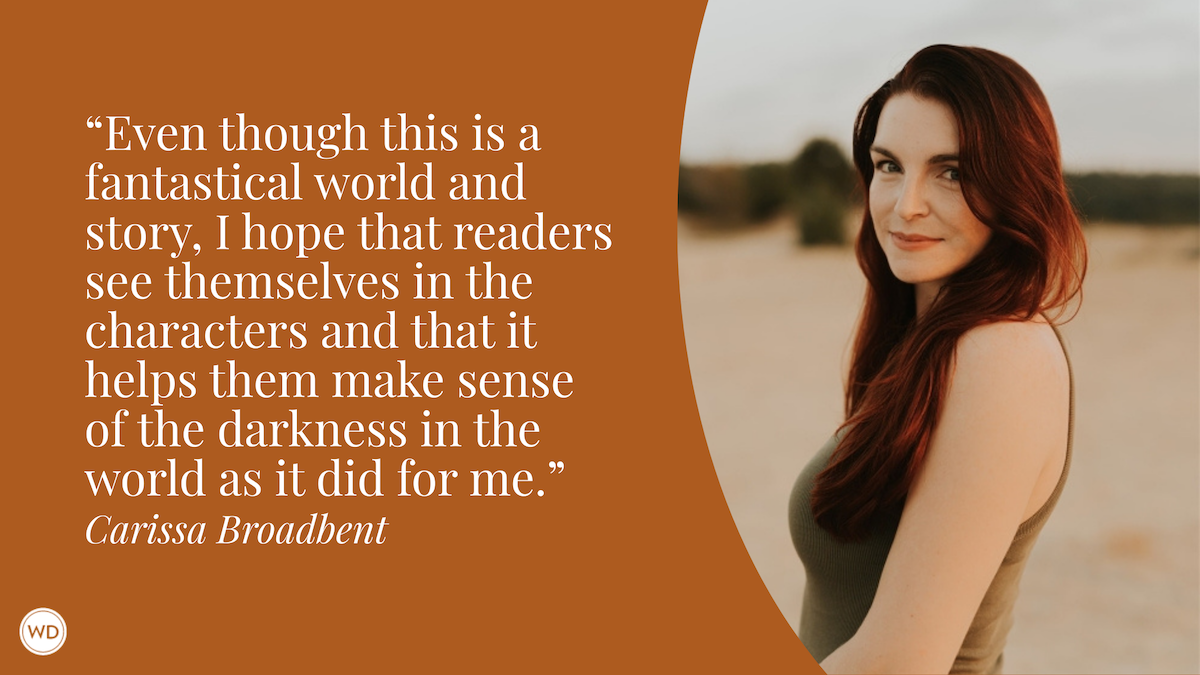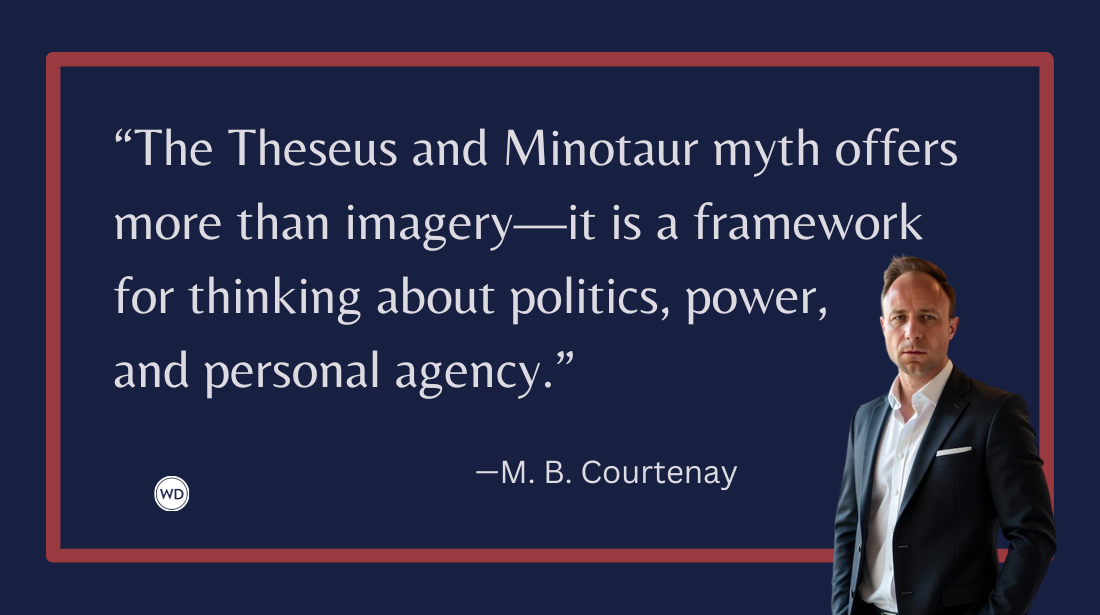How to Write the Last 10% of Your Novel
How can you tell when your novel is really finished? Learn the final-draft factors that most often make or break a novel.
There’s a stage of publishing that’s not often talked about. It’s the stage at which you’ve completed what you believe to be your final draft. Critique groups, writing instructors and published authors rave about your writing. You feel justified. Ready. You’re eager to move on.
Yet deep down you know something’s still missing. It’s the elusive point at which your work is garnering positive feedback, but still not securing the agent or contract you’re after. It’s what I refer to as the last 10 percent. It feels like the grueling end to a marathon for which you’ve been training for years.
—by Lisa Rector
The thought of doing more work at this late stage is often met with resistance. After all, no one can tell you what to do to make your novel a success. It’s easy for editors, agents and critique groups to spot something that’s gone wrong in your manuscript. But it’s much harder to tell you what’s missing.
What’s needed is not more polishing or superficial revisions but rather a deepening of craft. This breaks down into two broad categories: what’s missing in your manuscript and, paradoxically, what’s already working beautifully. Why the latter? Because you need to do more of it.
As an independent editor, I’ve worked with many writers facing this frustrating stage of the process—and I’ve found that certain issues come up over and over again in my work with them. Here’s how to tap into that magical last 10 percent and uncover your story in its fullest, richest form.
Make sure your story matters.
A common problem in the third-draft stage is that the protagonist’s journey doesn’t always feel authentic, unique or of high importance. The solution is to look at it from two angles: your character’s relationship to the main story problem, and your own relationship to your protagonist.
Driving Action With Emotion
In many manuscripts the story’s central problem resolves too easily or simply doesn’t matter enough to the main character. How can that be when so much work has gone into it? The reason is that through the course of writing and revising, many authors think in terms of singular events and resolution rather than in terms of large-scale conflicts and ongoing consequences. They lurch from moment to moment rather than unfolding a grand scheme.
When you build a story from moment to moment, each event in the story doesn’t necessarily impact the final outcome, let alone influence the overall arc of your main character. Often, late-stage manuscripts are filled with scenes that start off strong but don’t go anywhere important. High-action openings to such scenes may grab our attention in the short term, but if you haven’t given your character an internal dilemma that is significant enough to rival the external conflicts on the page, the story is sure to falter.
The way to address this issue in your final draft, then, is to anchor each scene of the story fully in your character’s needs as well as in the overt problem itself. In other words, whatever is happening at any given moment in your manuscript, and whatever the changes your protagonist is going through, both must be deeply personal.
What makes it impossible for the hero to turn away, ignore what’s happening or return to a life he knew beforehand? What is he on the verge of? What happens if he fails? If he succeeds? Is solving the problem a matter of high principle, or a matter of low selfishness? Making sure these motivations are clear in everything your main character does goes a long way toward making your story personal.
At this stage, it’s equally crucial to keep the big picture in mind. Plenty of authors build scenes around moments of significance. Great. But are those moments important only individually, or do they help create a significant outcome for the rest of the story?
To put it differently, the urgency and importance of the plot don’t reside in external events. They’re inherent in what’s happening inside your character’s response to those external events. In order to effectively show the change that is occurring in your story, you need to establish excitement, doubt, dread or hope inside the character on the very first page—then go somewhere with it through the middle of the book. Excitement turns to regret, doubt turns to certainty, dread turns to despair, hope burns brighter. What does your protagonist understand about the situation that no one else does? Action and emotion work together to create the kind of story that truly matters.
Remembering Your Purpose
The second dimension of building stories that matter is discovering, and fully utilizing, why this story matters to you. What are the fundamental issues you want to raise for readers? Many well-written manuscripts fail to make that clear.
Go back and look at what drew you to the story in the first place. A character? An historic event? You undoubtedly made a point of putting certain things in your book because you have something valid and important to say, but chances are you’re still not coming out and saying it. At this stage many authors play it safe. They shy away from big conflicts and profound changes. They have in their hearts the material of great novels but they settle for an easily readable manuscript.
Have you captured on the page what’s important to you to say? What have you illuminated about this character or world that no one else can? How have you made that clear in the current draft? If you’re struggling to get that on the page, you still have work to do.
Great storytellers understand what their work is about and why it matters. That’s why it matters to readers.
Look beyond your main character.
It’s not just the hero’s story that must be fulfilled in order to leave readers satisfied. Villains and secondary characters must also overcome large or multiple challenges and do so in unusual ways. Like your protagonist, they require emotional depth.
Developing Antagonists Fully
The most interesting villains are right about something, have something to say that’s important, and undertake a journey of their own. Have you created a worthy match for your protagonist? Is this character as complex and surprising as your main character?
If not, try these questions: What’s your antagonist’s unique point of view? Does this antagonist in some way make your protagonist better? What really matters to this character that he can’t let go? How is he altered in some way by the end of the book?
Go back and do a villain draft. Imagine it is her story. Even if she isn’t present in every scene, she should play an integral role throughout. Once you’ve done this, you’ll have a character who can match your protagonist every step of the way.
Making Secondary Characters Significant
It’s essential, too, that secondary characters do something significant. For instance, what meaningful thing might a minor character do or say to impact the outcome of the story? Find several places for this to occur in your manuscript—and make sure one of those places is early on. Characters that are inactive in the opening scenes tend to remain so. In general it’s far more effective to have fewer characters do more.
Another way to better utilize secondary characters is to be sure they influence your protagonist in a meaningful way. Ask: How can this secondary character actually change your protagonist?
You can also use secondary characters as connecting threads among the questions, ideas and issues presented to readers. Involve them in crisis and change. Explore who these characters are outside of their relationships to the protagonist and in relation to the message you want readers to take away from the book. Make room for that, and you’re on your way to telling a story that’s working 100 percent.
Secondary characters are most memorable when they have unusual motivators, harbor hidden agendas, or themselves struggle with multiple conflicts. Give them that scope, and they’ll make multiple contributions to the story, too.
Play up your strengths.
Even more difficult than getting what’s missing from your manuscript onto the page is understanding what you do well, and doing more of it.
Most authors tend to repeat the mistakes that are evident in the first 50 pages, but they don’t necessarily replicate what works well early on. Why not? Probably because getting it right for most writers starts with not getting things wrong. They focus on weaknesses, not strengths.
In fact, authors often tell me that the very things they see as strengths in their manuscripts, the moments that made them feel like they’d accomplished something special or mastered a specific technique, are the very things that they believe cause them to be turned away by agents and publishers. No wonder they start playing it safe!
The truth is, if you’re at the last 10 percent stage, you are doing something right. You just haven’t taken it far enough. You may be doing all the right things, but you’re underplaying them or hoping that a sprinkling of good stuff will carry your reader along.
It isn’t enough simply to cut the things that don’t work. You’ve got to do more of what’s working. But how do you go from happy accidents to deliberate, authoritative techniques?
Start with a few simple questions: What is it that makes people respond so positively to a particular character or scene? Balancing action with emotion? A striking detail, comment or observation? A shock decision? Humor? Crisp dialogue? If you’re not sure, go back and ask your previous readers or critique partners.
Your task now is to recreate that feeling for readers time and time again. Take another look at your strongest scenes. List what works. Suppose, for instance, that your strongest scene enacts a strong change. Great. Work on that until every scene enacts a change that’s just as profound.
That said, you also want to make sure you don’t have a string of similar scenes in a row. Even established authors can fall prey to this trap. It’s an issue that routinely crops up in late-stage manuscripts. Watch out for scenes revolving around character introductions, backstory or people moving from one location to another without implementing change or renewing motivation.
Build-up scenes that promise we’ll learn something important about character or plot—eventually—can also make tension disappear. The problem with delay is that it often unnecessarily withholds information from the reader. What’s preventing you from deepening character, adding plot layers and complications, or paying off an earlier plot point right now? Is it really servicing the story not to play up these strengths every chance you get? Probably not.
Start with those scenes that have special significance to you. What’s the common thread in those scenes? A surprise? Something happening that in some way alters the character by the end of the scene? An unexpected gift? A moment of loss or acceptance?
Try a revision solely focused on enhancing the story’s existing strengths. You’ll be surprised at how much depth this adds to your novel—and how much bolder, braver and more purposeful a storyteller you’ll become.
Take it to the finish line.
Marathons are grueling. The last three miles feel longer than the first 20, not because the distance is farther but because it’s the most demanding part of the race. You’re exhausted but you have to push through to reach the finish.
Some writers find it easier to quit, to focus on another book, self-publish or claim their editors don’t know what they’re talking about. Instead, ask yourself why you wanted to write this book in the first place. Then get back to work using the techniques in this article.
It won’t help you finish faster, but it will change your understanding of story, the way you write, and your relationship with readers. The beginning of your story is a promise; a promise that things will be different at the end. When you deliver on that promise not just at the finish but many times over the course of a novel, readers’ trust in you will grow.
Even more than that, you’ll start to trust in yourself. You’ll know your story is complete when you’ve said what you needed to say without exception. You’ve stopped thinking about the finish line. You’re no longer making last-minute tweaks and surface revisions. It’s the point at which responses equal readiness.
In turn you’ll gain the trust of agents, editors, booksellers and everyone else who helps bring your work to your readers. In fact, they’ll be eager to do so. You’ll be over the last 10 percent and on your way to a successful fiction career.
*********************************************************************************************************************************
Follow me on Twitter: @BrianKlems
Check out my humor book, Oh Boy, You're Having a Girl.
Sign up for my free weekly eNewsletter: WD Newsletter









